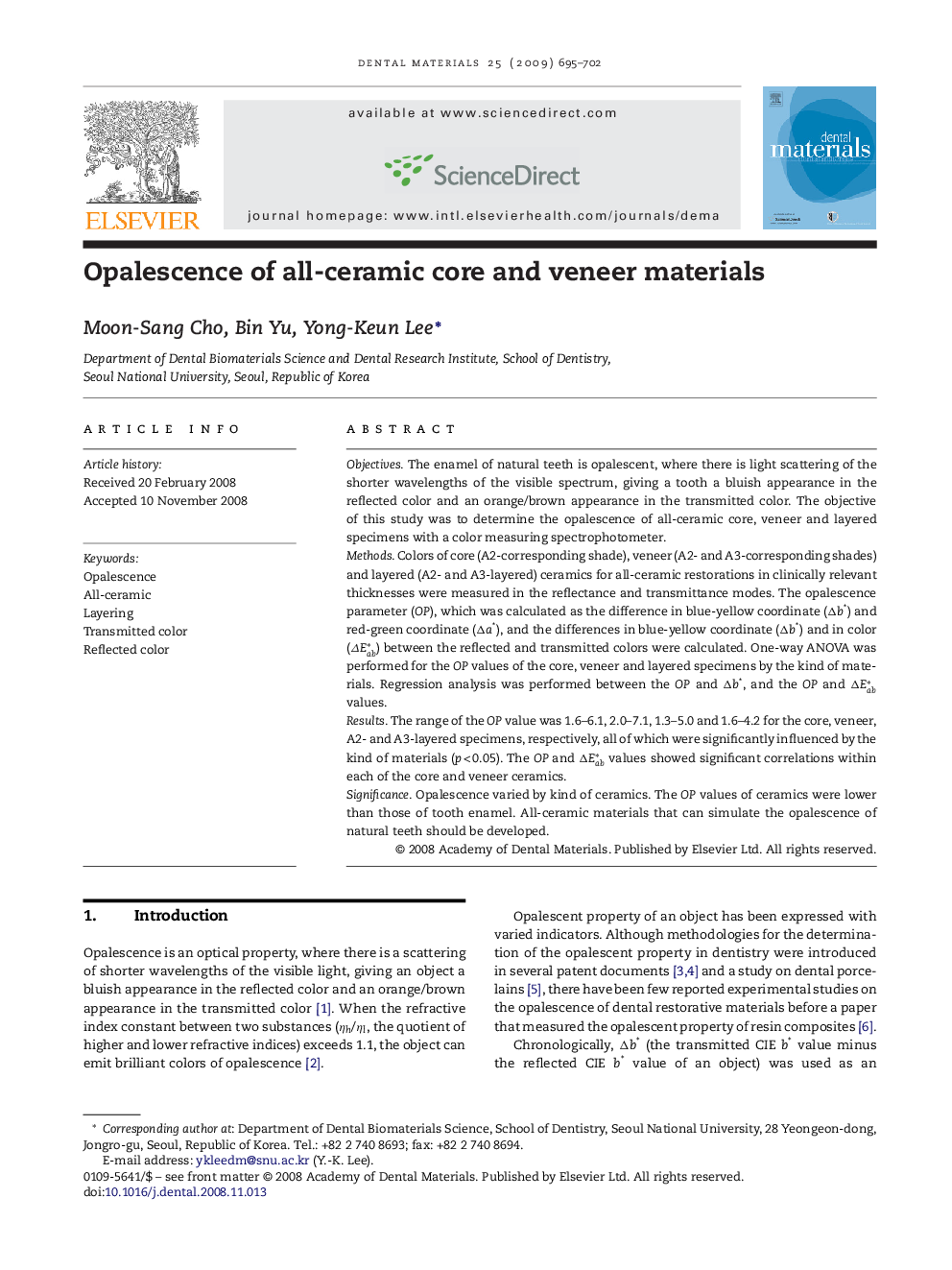| Article ID | Journal | Published Year | Pages | File Type |
|---|---|---|---|---|
| 1422332 | Dental Materials | 2009 | 8 Pages |
ObjectivesThe enamel of natural teeth is opalescent, where there is light scattering of the shorter wavelengths of the visible spectrum, giving a tooth a bluish appearance in the reflected color and an orange/brown appearance in the transmitted color. The objective of this study was to determine the opalescence of all-ceramic core, veneer and layered specimens with a color measuring spectrophotometer.MethodsColors of core (A2-corresponding shade), veneer (A2- and A3-corresponding shades) and layered (A2- and A3-layered) ceramics for all-ceramic restorations in clinically relevant thicknesses were measured in the reflectance and transmittance modes. The opalescence parameter (OP), which was calculated as the difference in blue-yellow coordinate (Δb*) and red-green coordinate (Δa*), and the differences in blue-yellow coordinate (Δb*) and in color (ΔEab*) between the reflected and transmitted colors were calculated. One-way ANOVA was performed for the OP values of the core, veneer and layered specimens by the kind of materials. Regression analysis was performed between the OP and Δb*, and the OP and ΔEab* values.ResultsThe range of the OP value was 1.6–6.1, 2.0–7.1, 1.3–5.0 and 1.6–4.2 for the core, veneer, A2- and A3-layered specimens, respectively, all of which were significantly influenced by the kind of materials (p < 0.05). The OP and ΔEab* values showed significant correlations within each of the core and veneer ceramics.SignificanceOpalescence varied by kind of ceramics. The OP values of ceramics were lower than those of tooth enamel. All-ceramic materials that can simulate the opalescence of natural teeth should be developed.
